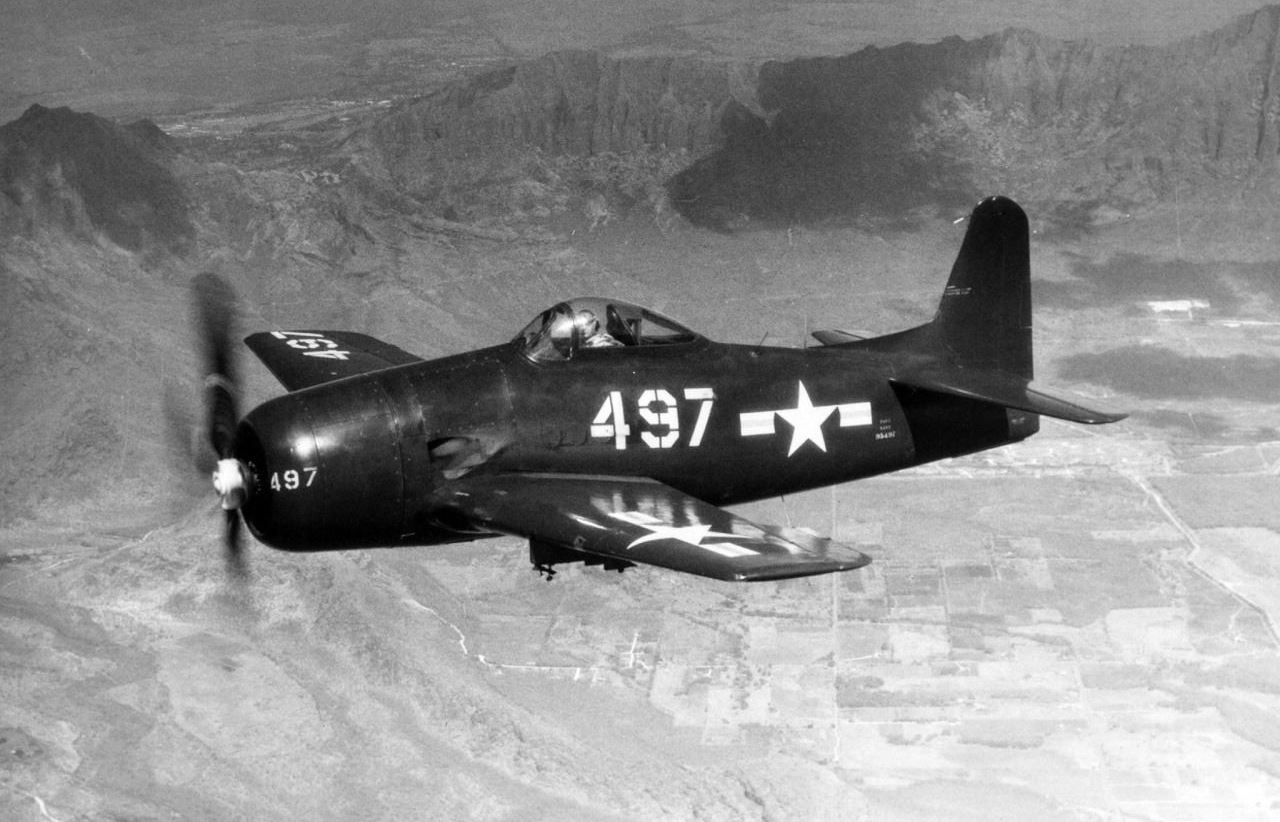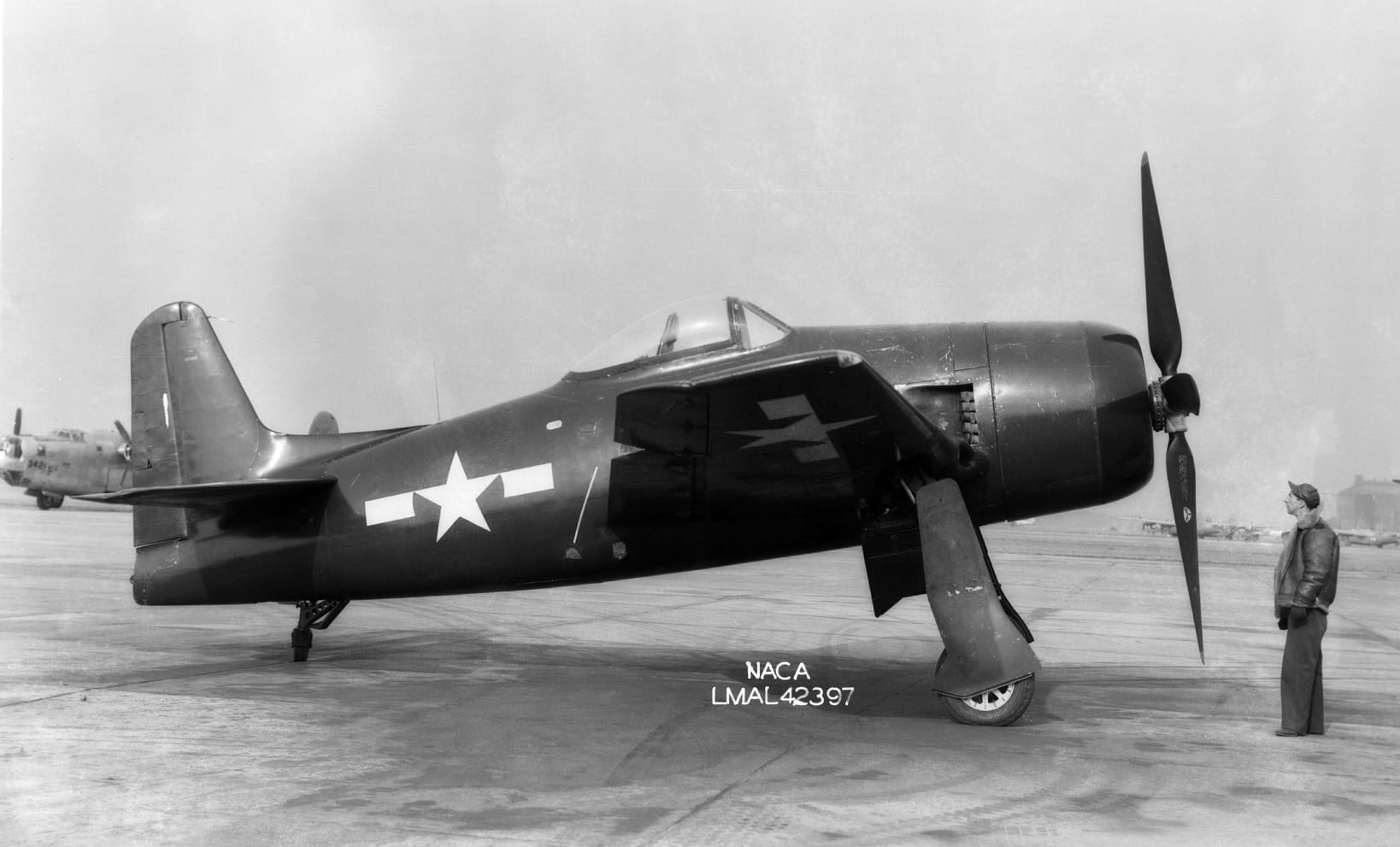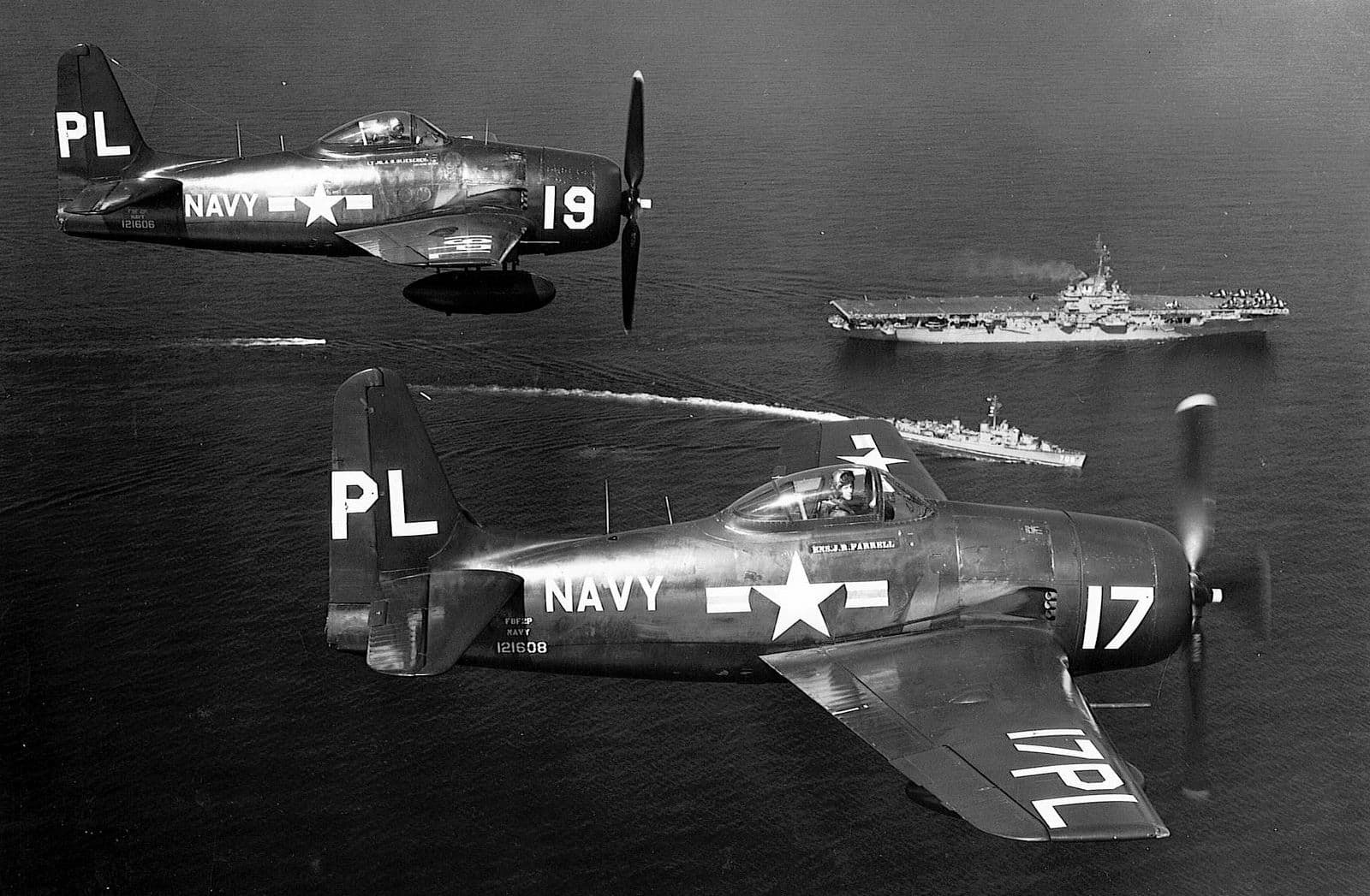Developed to Operate from Escort Carrier Decks, the F8F Bearcat Barely Missed the Action in World War II
On 23 June 1943, a meeting took place at Pearl Harbor in Hawaii. This particular meeting was between veteran Navy and Marine Corps Grumman F4F Wildcat pilots and Grumman Vice President Jake Swirbul.
The legendary John S. “Jimmy” Thach opined that the most important characteristic in a fighter aircraft was rate of climb. With production of the company’s F6F Hellcat well underway and the type soon to see combat for the first time, Grumman would need to design a completely new aircraft to create a fighter that could operate from the small flight decks of escort carriers.
The F6F was too large and heavy, and the F4F needed to be replaced. The design that Grumman developed to meet the need was designated G-58. You know it as the F8F Bearcat.

High Speed Low Drag
Grumman’s design team, led by Bill Schwendler, sought to utilize the proven and powerful Pratt & Whitney R-2800 Double Wasp radial engine to power the G58. They basically designed the smallest fighter around the engine they could. In comparison with the F6F, the G58 was five feet shorter with a seven-foot narrower wingspan and was more than 1,500 pounds lighter.

Didn’t Look Like a Grumman
The G58 did not have the “razorback” structure behind the cockpit that both the F4F and F6F did; the G58 was a bubble canopy design. The G58 utilized heavier-gauge aluminum for its outer skins and was flush riveted and spot-welded together. Longer landing gear legs were required to provide clearance for the large, four-bladed Aeroproducts propeller, which gave the Bearcat its trademark stance.

Better Than the Best Available
Some of the weight savings in the G58 came at the cost of fuel capacity and firepower. The G58 was equipped with a total of four Browning .50-caliber machine guns, whereas many US fighter aircraft had six. These compromises, in turn, meant that the Bearcat would have to perform primarily as an interceptor rather than as a long-range escort. But when the performance numbers were tallied, the G58 was 20% lighter, had a 30% better rate of climb, and was 50 miles per hour faster than the F6F.

Built to Intentionally Shed Its Outer Wings
Detachable wingtips, designed to reduce outer wing panel weight and intended to snap off under high-G loading, proved to be a problematic solution for weight savings. It was thought that a G58 without its outer wing panels could continue flying, but several aircraft were lost due to one or the other of those outer panels not detaching properly, causing asymmetric lift. The wing panels were eventually stressed to the same standards as the rest of the wings and bolted on permanently.

Too Good to Ignore
Just nine months after starting the design of the G58, Grumman test-flew a prototype, now designated XF8F-1, on 21 August 1944. The climb rate was excellent, but stability problems overshadowed the Bearcat’s performance. The addition of a fillet in front of the vertical stabilizer, and later a taller and larger vertical stabilizer, solved the stability issues.
Other issues, including the cockpit being too tight, the trim system, the pitot system, and a low maximum speed for landing gear extension, were also reported. Pilots also wanted six .50-caliber machine guns, but the aircraft was too closely balanced to accommodate two more.


I grew up in Bethpage, LI, NY. My uncle Herb was Chief Pilot for Grumman Aircraft. William T Schwendler was my neighbor. He used to talk about the Bearcat quite often. He called it his ”Bärenkatze“…
Many years back I watched aerobatics from one of these F-8 Bearcats at Spaceland Air Park. “Impressive”. Everybody talks about those smoth fine running F-51’s, but I guess it’s my flightline experience, I like those ole big radial jug engines working hard.